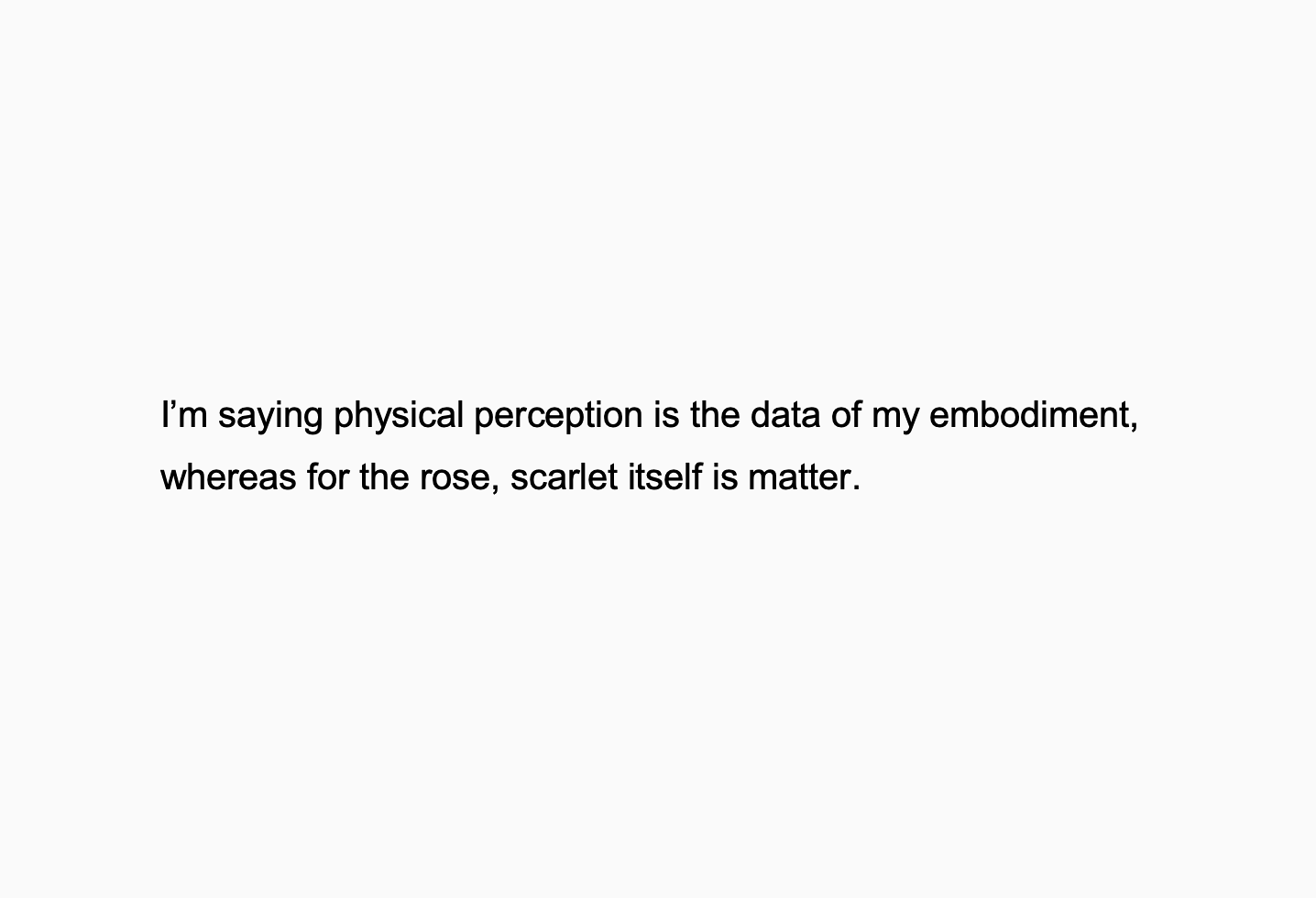In Meeting the Universe Halfway (2007), Karen Barad describes a 1922 experiment that changed the course of quantum physics.1 Stay with us here. Rather than get into the details of what Otto Stern and Walther Gerlach were investigating—our grasp on space quantization is loose—we’ll merely highlight that their attempts to record what happens when silver atoms are beamed through a magnetic field were initially frustrated. It was only when Stern, a cigar smoker, leaned in to observe the screen on which the atoms had landed that their traces appeared. The sulfur in the cigar smoke had turned the silver into the more easily visible, dark black silver sulfide, “like developing a photographic film.”
Barad’s point is that the cigar is not featured in textbook representations of the experiment’s equipment—alongside atom beam, magnets, and screen—yet was essential to its findings. The physicist from whom she takes her lead, Niels Bohr, was scrupulous about including in his sketches even such seemingly superfluous details as the bolts holding the apparatus together, because he recognized that the material infrastructures of an experiment dictate the readings it produces. Barad goes further by including the cigar in her diagram. But if we are including the cigar, do we have to include the smoker? Is it relevant that the cigar contained sulfur because Stern, early in his career, could only afford cheap tobacco? That this was interwar Frankfurt, so naturally professors smoked cigars in labs? That the smoking of cigars was, like particle physics, in 1922 an overwhelmingly gendered pursuit? Do we need to invoke Freud? Does it matter that the experiment was funded through a period of hyperinflation by a donation from a founder of Goldman Sachs, sympathetic because his family had roots in the city? What is included in the apparatus—we might say the discourse—that produced these results, and what is not?
In a similar vein, the art historian Arthur Danto considered a bronze statue of a cat on the Columbia University campus.2 The cat has been chained to an iron railing, presumably to prevent its theft. Given that cats sometimes wear chains, and that the chain is physically connected to the statue by a collar, the question is whether we should include the chain in our reading of the artwork. Is this a chained sculpture of a cat, or a sculpture of a chained cat? The chain is connected to a railing, so should we include that, too, and the campus of which the railing is a part? Where does the art end and the world begin? Danto argues that we must always make a “semantic interpretation” of what constitutes the work of art as distinct from, for example, the wall on which it hangs; Barad states that every experiment requires that we make a “cut” that establishes its boundaries. This “cut” circumscribes the field, it decides what is in and what is out, and it determines what effects are produced. Which is to say, what it means.
For all that we’ve chosen to introduce them through quantum physics and cat sculptures, these issues inform contemporary debates on where to draw the boundaries around art. What is in and what is out? Is the architecture of a commercial gallery a factor in your reception of its exhibition? Are the protestors in the museum’s lobby? What if the security guards have prevented the protestors from entering, but their chants filter in through a window? Is the identity of the artist relevant to your interpretation of their work? Should the extractive practices generating the electricity that lights the space in which you are standing be taken into consideration? Is the destruction of the climate or the bombing of Gaza a factor in what matters in a work of art?3
Where we make that “cut” is a political choice suggested by the artist and decided by the interpreter. Yet it is crucial to Barad’s argument that this doesn’t lead us down the path to total relativism but—quite the opposite—guarantees the possibility of objectivity. To acknowledge we can make the “cut” at different points is to reclaim the possibility of critical discourses based on clear principles within set parameters. In the context of criticism, this means that there is no contradiction in publishing close readings of single works followed by wider investigations into, to take an example from this month’s program, how the queer underground in apartheid South Africa shaped contemporary performance practices. Of debating the past and present implication of art institutions with social injustice even as we read in isolation the works that they exhibit to the public. If everything is connected, then the boundaries we impose are artificial and moveable. This is not to say that they are arbitrary.
Barad draws on Bretislav Friedrich’s “Stern and Gerlach: How a Bad Cigar Helped Reorient Atomic Physics” in Physics Today (December 2003).
Arthur Danto, “Aesthetic Responses and Works of Art,” Philosophic Exchange (Vol. 12 no. 1, 1981)
The editors reiterate their support for “A Letter Against Apartheid,” recently published at e-flux: https://www.e-flux.com/announcements/397676/a-letter-against-apartheid/.
